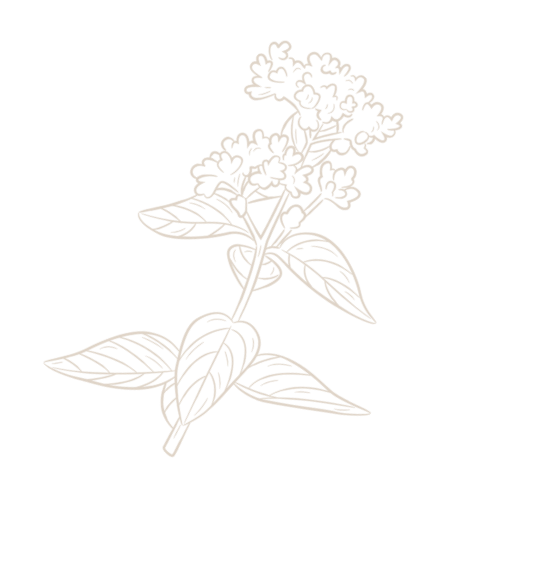Cardanol
Cardanol is a naturally occurring Phenol in light pale yellow colour manufactured from CNSL. It is a monohydroxyl Phenol having a long hydrocarbon Chain (C15H27) in the Meta position. Cardanol also known as Cashew Phenol is obtained in the distillation process of technical CNSL under reduced pressure. The distillation takes place at high temperature and Distilled CNSL vapours are received through high vacuum. The average unsaturation of about two double bonds in the side chain of the Cardanol molecules make cross linking easy and provides a satisfactory gradual drying and baking properties to paints prepared from it. Because of its peculiar structure Cardanol Varnishes have high electric Insulation, greater resistance to water, chemicals and good flexibility.



Cardanol
Cardanol is a naturally occurring Phenol in light pale yellow colour manufactured from CNSL. It is a monohydroxyl Phenol having a long hydrocarbon Chain (C15H27) in the Meta position. Cardanol also known as Cashew Phenol is obtained in the distillation process of technical CNSL under reduced pressure. The distillation takes place at high temperature and Distilled CNSL vapours are received through high vacuum. The average unsaturation of about two double bonds in the side chain of the Cardanol molecules make cross linking easy and provides a satisfactory gradual drying and baking properties to paints prepared from it. Because of its peculiar structure Cardanol Varnishes have high electric Insulation, greater resistance to water, chemicals and good flexibility.



Cardanol is a phenol which has a C15 unsaturated alkyl chain with 1-3 double bonds at meta position. The component of commercial Cardanol differs in the degree of unsaturation of the side chain but for the practical purposes it can be represented by the following formula.
Cardanol is a natural phenol obtained from anacardic acid, the main component of cashew nutshell liquid (CNSL), a byproduct of cashew nut processing being an eco-friendly substitute for phenols.Cashew phenol popularly known as Cardanol or Card-Phenol manufactured from cashew nut shell liquid (CNSL). It is a monohydroxyl phenol having a long hydrocarbon chain (C15H27) in a metaposition.The name cardanol is used for the decarboxylases derivatives obtained by thermal decomposition of any of the naturally occurring anacardic acids. This includes more than one compound because the composition of the side chain varies in its degree of unsaturation. Tri-unsaturated cardanol, the major component (41%) is shown below. The remaining cardanol is 34% mono-unsaturated, 22% bi-unsaturated, and 2% saturated.
Cardanol Properties :
One of the significant advantages of the Cardanol is its amenability to chemical modification to effect desirable structural changes so as to get specific properties for making tailor-made polymers of high value. Thus, structural changes could be effected at the hydroxyl group, on the aromatic ring and on the side chain. The unique Molecular structure of Cardanol, especially unsaturation of long Hydrocarbon side chain, makes the cross linking easy on Polymerization. Also besides the side chain impacts hydrophobic nature to the polymer, its coating is Water and Weather resistant.


Cardanol Applications:
Cardanol is used as a primary building block for epoxy curing agents and epoxy diluents and modifiers. This natural alkylphenolic material has an aromatic ring that provides a strong chemical resistant backbone while the hydroxyl group gives strong adhesion and good reactivity for fast and low temperature cure. A long aliphatic side chain provides excellent water resistance, good flexibility, low viscosity, extended pot life, and excellent corrosion protection.


Cardanol has an excellent properties ideal for the coating industry. It is widely used to manufacture Epoxy Curing Agents and other resins for Paints, Varnishes, and Laminates. It’s widely used in Rubber, Pesticides, Adhesives, Mineral Oils, Break Linings, Electrical isolation putty, ink printing.
Cardanol finds use in the chemical industry in Oil and Alcohol soluble resins, laminating resins, rubber compounding and coatings, serving as an excellent raw material for the preparation of high grade insulating varnishes, paints, enamels. It is used in friction materials, and surfactants as pigment dispersants for water based inks and to make phenalkamines, which are used as curing agents for the durable epoxy coatings used on concrete floors. Cardanol can substitute Phenol in up to 30% in phenolic resins used as plywood bonding resin and for the lamination industries. Cardanol derivatives are extensively used in laminating industry for reducing brittleness and improving the flexibility of laminates produced by the co condensation of phenol, CNSL and formaldehyde, the resins improve resistance to heat, minimize age-hardening and improve bonding of the reinforcement materials like paper, cloth and glass fibre to the matrix. Cardanol is used as a dispersant and plasticizer.
- Oil Soluble Resins
The meta substitution and the long hidrocarbon chain in its molecule makes the resins prepared with Cardinol, highly soluble in oils and imparts superior properties such as high electric insulation and resistance against chemicals to its films. It is to manufacture both solid and semi solid resol or novolac type of resins depending upon the nature of catalyst and the aldehyde compound.Cardanol resin varnishes have good electrical insulating prop- erties and resistance against water and chemicals. They give superior quality Stamping Varnishes. Because of their high insulation and dielectric losses, these varnishes are preffered to compositions based on usual Phenol such as Cresol or Sub- stituted phenols.
- Surface Coatings and Paints
Cardanol resin Varnishs in addition to water and Chemical resistance have good air drying and baking properties. These compositions are suitable for wood finishes, food can lacquers textile bobins and high quality paints. Stoving paints can be prepared which could be baked at 60°C. The Cardanol based resins have good compatibility with other synthetic resins such as alkydes, epoxies chlorinated rubber, Phenolic etc., and can serve as raw material for variety of paints.
- Lamination Industry
By partly replacing the Phenol or Cresol in alcohol soluble resins used for Lamination one could prepare resins which imparts greater flexibility resistance to Chemical and water, and superior electrical insulation to the lamination sheets
- Surface Active Agent
Sulphonated ether of Cardanol has been found to be wetting agent and finds use in Textile Industry, ethoxylated Tetrahy- drocardanol Sulphonate performs better at high temperature than the detergents based on Dodoeyl benzene.
- Pesticides
Chlorinated Cardanol is reported to have good insecticidal, pesticidal and germicidal properties. Cardanol Formaldehyde resin is also used as a solvent for well known pesticides such as Pyrethrin and Rotanes. Paranitro Tetrahydro Cardanol finds use as a coupling compound in sprayable pesticides such as Parathion.
- Rubber Compoundings
Oil soluble Cardanol resins are used in Rubber Compounding. They impart high tear strenght and resistance against Petrole- um based solvents. Pure Cardanol acts as a Deoxident and Plasticizer when incorporated in rubber. Its ethers are also used as plasticizers for synthetic rubbe to reduce the shore hardness and improve the ageing properties.
- Mineral Oil Additives
Mineral oil additives based on Amino Cardanol ethers of hy- dronated Cardanol and salts of its Sulphonated ethers are found to improve the viscosity index of mineral oil, inhibit sludge formation and antioxident properties.
- Food Can lacquers
Co-polymers of Cardanol with other film forming materials give good quality lacquers giving golden yellow films both of air drying and baking type. These have been found to be very effective for food can application.
Adhesives based on Cardanol Resins give superior water re- sistance and bonding properties to the plywood.
- Adhesives
Many types of adhesives and cements can be prepared with Cardanol. When it is reacted with Epichlorohydrin and modi- fied with Phthalic Anhydride a coating compound is obtained which has excellent film properties and adhesion. An excellent quality of Friction dust could be prepared from Cardanol which finds use brake linings and Clutch facings.
CARDANOL TECHNICAL SPECIFIACITON
Type 1- CARDANOL (SINGLE DISTILLED)
Colour (Freshly Distilled) : Gardener’s Standard 7 to 11
Odour : Very Mild
Sp. Gravity at 300C : 0.923 to 0.933
Viscocity at 300C (Cps) : 55 to 65
Volatile Losses ( 205±50C) : 2% (Max)
Ash Contents : Negligible
Iodine Value (Wijs) : 250 (Max.)
Acid Value : 5 (Max.)
Hydroxyl Value (KoH/g) :180 to 200
Type 2- CARDANOL (DOUBLE DISTILLED )
Colour (Freshly Distill : Gardener’s Standard 2 to 6
Odour : Very Mild
Sp. Gravity at 300C : 0.923 to 0.933
Viscocity at 300C (Cps) : 45 to 55
Volatile Losses ( 205±50C) : 2% (Max)
Ash Contents : Negligible
Iodine Value (Wijs) : 250 (Max.)



